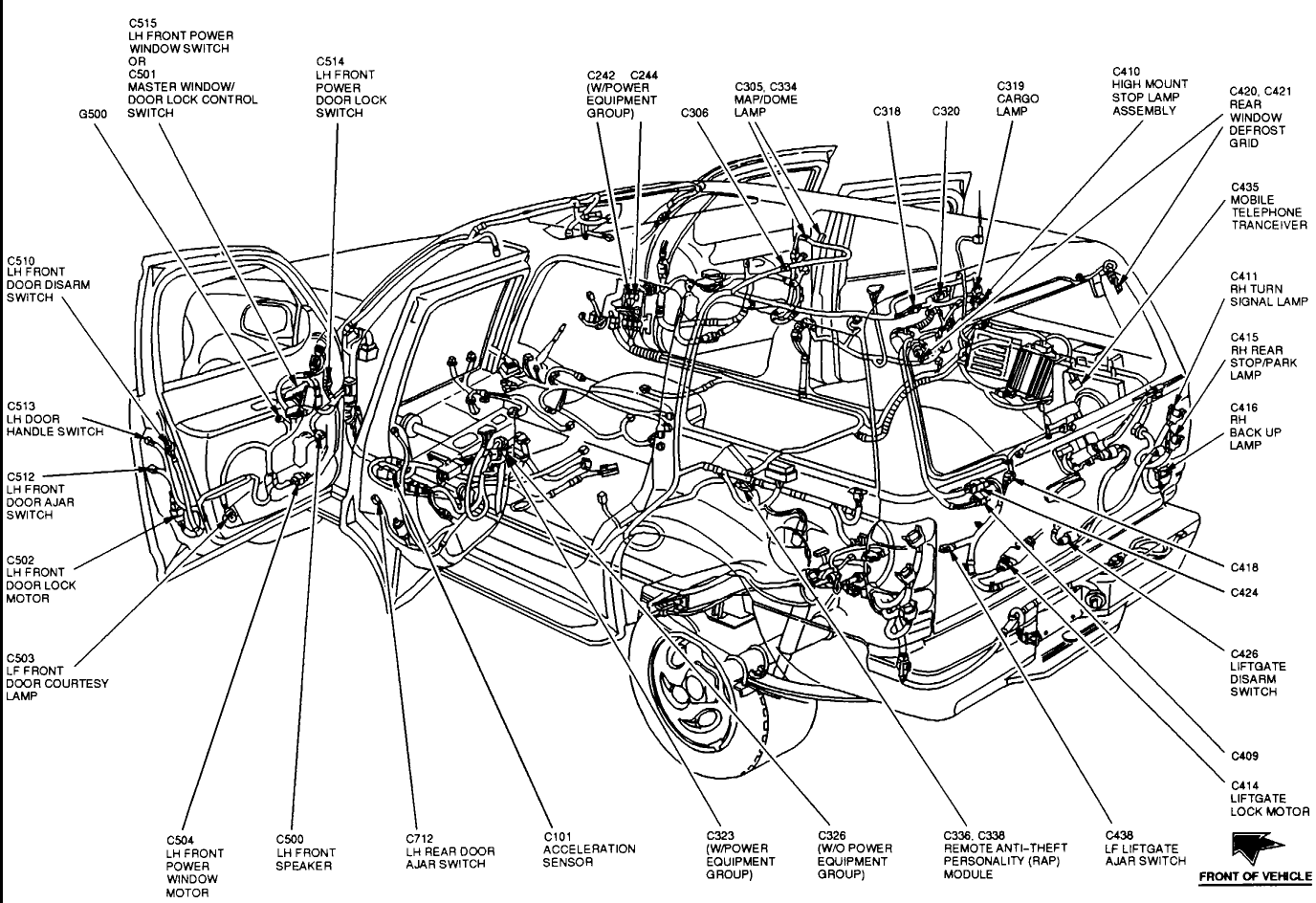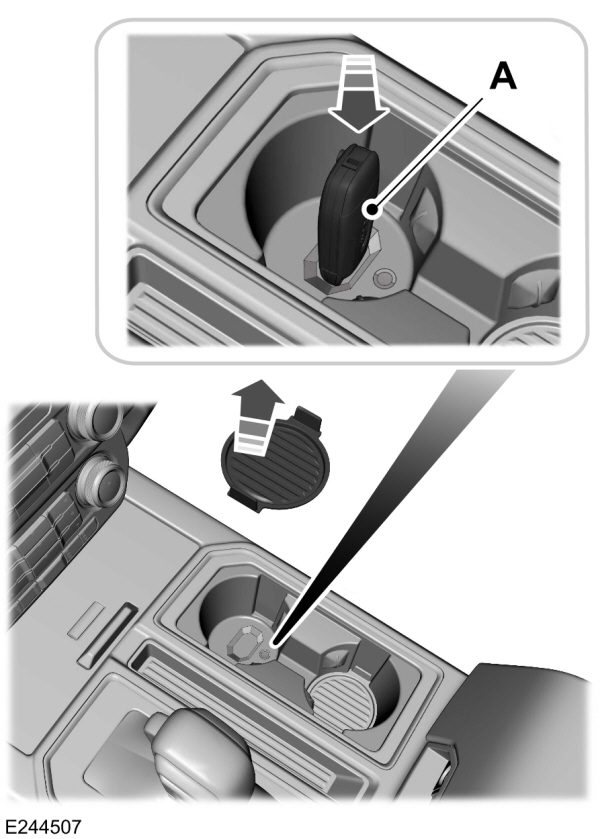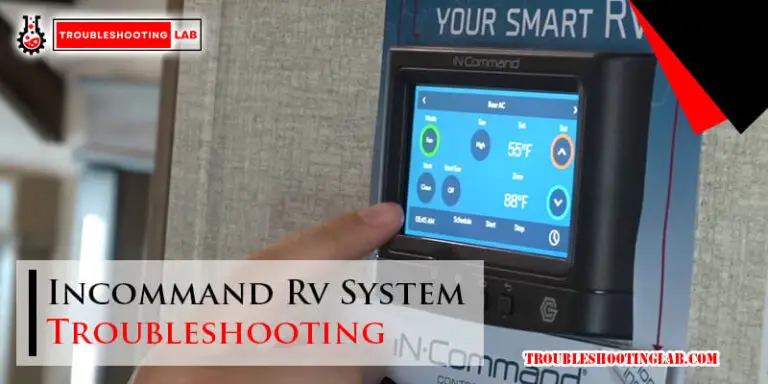Ford Anti-Theft System Troubleshooting: Quick Fixes and Tips
Ford’s anti-theft system can sometimes pose challenges for car owners. Understanding and troubleshooting these issues is essential.
The Ford anti-theft system is designed to protect your vehicle from unauthorized access. Yet, like any technology, it can malfunction. Whether you’re dealing with a blinking theft light or your car refusing to start, understanding these common problems is crucial.
This guide will walk you through the basics of troubleshooting your Ford’s anti-theft system. By identifying and addressing these issues, you can ensure your car remains secure and functional. Let’s dive into the common symptoms and solutions to keep your Ford running smoothly.
Introduction To Ford Anti-theft System
The Ford Anti-Theft System helps protect your vehicle from unauthorized access. This system is integrated into most modern Ford cars. It includes features like keyless entry and immobilization.
Understanding your Ford Anti-Theft System can help you troubleshoot issues. This can also ensure your vehicle remains secure.
Importance Of Anti-theft Systems
Anti-theft systems play a crucial role in vehicle security. They help prevent car theft and unauthorized access. Ford’s system is designed with advanced technology to ensure safety.
- Protects your vehicle from theft
- Prevents unauthorized use
- Enhances overall vehicle security
A reliable anti-theft system can give you peace of mind. Knowing your car is secure is important for every car owner.
Common Issues Faced
Despite their benefits, anti-theft systems can sometimes face issues. Here are some common problems:
| Issue | Description |
|---|---|
| Faulty Key Fob | The key fob may not communicate with the system. |
| Immobilizer Problems | The car may not start due to immobilizer issues. |
| Alarm Malfunctions | The alarm may go off without any reason. |
Addressing these issues promptly can help maintain your vehicle’s security. It is important to diagnose and fix problems early.
Identifying Anti-theft System Problems
Identifying problems with the Ford anti-theft system can be confusing. Understanding the warning signs and using the right diagnostic tools can help. This guide makes the process simpler and easier for you.
Warning Signs
Recognizing the warning signs of anti-theft system issues is key. Here are some common indicators:
- Car won’t start: If the engine does not turn over, the anti-theft system may be active.
- Flashing lights: Look for a blinking or solid anti-theft light on the dashboard.
- Key problems: The key may not turn in the ignition, or it may not be recognized.
- Alarm issues: The car alarm may go off without any apparent reason.
- Lock problems: Doors may not lock or unlock using the key fob.
Diagnostic Tools
Using diagnostic tools can pinpoint the exact problem. Here are some tools that can help:
| Tool | Description |
|---|---|
| OBD-II Scanner | Connect this tool to your car’s OBD-II port to read error codes. |
| Key Programmer | Used to reprogram or test the car’s key fob. |
| Multimeter | Check the battery voltage and electrical connections. |
These tools can save you time and effort. They help identify the exact issue with the anti-theft system. If you do not have these tools, consider taking your car to a professional mechanic.
Resetting The Anti-theft System
The Ford Anti-Theft System is a security feature that helps protect your vehicle from theft. Sometimes, it can mistakenly activate, leaving you locked out. Learning how to reset it can save you time and stress. This section will guide you through the process.
Step-by-step Guide
- Insert the key into the ignition.
- Turn the key to the “On” position but don’t start the engine.
- Leave the key in this position for 10 minutes. The security light should turn off.
- Turn the key to the “Off” position and wait for 20 seconds.
- Repeat steps 2-4 two more times. This means you do the cycle three times in total.
- Finally, turn the key to the “Start” position to start the engine.
Precautions To Take
- Ensure the battery is fully charged. A low battery can interfere with the process.
- Use the correct key. The system won’t reset with the wrong key.
- Do not rush. Follow each step carefully to avoid errors.
- Avoid distractions. Stay focused to reset the system correctly.
- Consult the manual. Refer to the vehicle’s manual for specific instructions.
By following these steps and taking these precautions, you can reset your Ford’s anti-theft system effectively. This can help you get back on the road without unnecessary delays.

Credit: www.cargurus.com
Dealing With Key Fob Issues
Dealing with key fob issues in your Ford can be frustrating. A malfunctioning key fob can prevent you from starting your vehicle or unlocking the doors. Understanding common problems and solutions can save you time and stress.
Battery Replacement
The most common issue with key fobs is a dead battery. The key fob uses a small coin-cell battery. These batteries can wear out over time. You can replace it yourself with a few simple steps. First, open the key fob case using a small flathead screwdriver. Be gentle to avoid damaging the plastic. Remove the old battery and note its orientation. Insert the new battery in the same direction. Close the key fob case and test it. If the key fob still does not work, consider other issues.
Reprogramming The Key
Sometimes, the key fob may lose its programming. This can happen due to electronic interference or a long battery life. Reprogramming the key fob can solve the issue. Sit in your vehicle with all doors closed. Insert the key into the ignition and turn it from OFF to RUN eight times. Do this within 10 seconds. The locks will cycle to confirm programming mode. Press any button on the key fob. The locks will cycle again to confirm programming. Turn the ignition OFF. Test the key fob to ensure it is working. If the problem persists, it may need professional attention.
Addressing Sensor Malfunctions
Dealing with sensor malfunctions in your Ford’s anti-theft system can be frustrating. These issues can prevent your car from starting or cause false alarms. Understanding common sensor problems and knowing how to replace faulty sensors can help you maintain your vehicle’s security.
Common Sensor Problems
Sensors are crucial for the anti-theft system to function properly. Common sensor issues include:
- Faulty Door Sensors: These sensors may not detect if doors are open or closed.
- Dead Key Fob Battery: A weak or dead battery can prevent the key fob from communicating with the car.
- Ignition Switch Issues: Problems with the ignition switch can disrupt the sensor’s signals.
Signs of sensor malfunctions include the alarm going off unexpectedly, the car not starting, or warning lights on the dashboard.
Replacement Procedures
Replacing faulty sensors is often the best solution. Here are the steps to replace common sensors:
Replacing Door Sensors
- Open the car door and locate the sensor on the door frame.
- Disconnect the wiring from the old sensor.
- Remove the old sensor using a screwdriver.
- Install the new sensor and reconnect the wiring.
- Test the new sensor by closing and opening the door.
Replacing the Key Fob Battery
- Open the key fob casing with a small flathead screwdriver.
- Remove the old battery and note its orientation.
- Insert the new battery in the same orientation.
- Close the key fob casing.
- Test the key fob to ensure it works.
Replacing the Ignition Switch
Replacing the ignition switch is more complex. It might require professional help. If you choose to do it yourself, follow these steps:
- Disconnect the car battery to avoid electrical shocks.
- Remove the steering column cover using a screwdriver.
- Locate the ignition switch and disconnect its wiring.
- Remove the old ignition switch.
- Install the new ignition switch and reconnect the wiring.
- Reattach the steering column cover and reconnect the battery.
- Test the new ignition switch by starting the car.
Always ensure you have the correct replacement parts. Use genuine Ford parts for the best results.

Credit: www.youtube.com
Handling Wiring And Connection Issues
Handling wiring and connection issues in Ford’s anti-theft system can be daunting. The good news? You can tackle most of these problems with a few basic steps. This section will guide you through checking for loose connections and repairing damaged wires.
Checking For Loose Connections
Loose connections can cause the anti-theft system to malfunction. Start by inspecting the wiring harness. Look for any cables that are not securely plugged in. Gently tug on the wires to see if they are loose. Pay close attention to the wires near the ignition and the anti-theft module. Ensure all connectors are firmly attached. Tighten any that feel loose. This simple step can often resolve the issue.
Repairing Damaged Wires
Damaged wires can disrupt the anti-theft system’s operation. First, visually inspect the wires for any signs of wear or damage. Look for frayed or broken wires. If you find damaged wires, cut out the affected section. Strip the ends of the remaining wire. Use a wire connector to join the stripped ends. Make sure the connection is secure. Tape the repair with electrical tape. This will protect the connection from further damage. Regularly check and maintain the wiring to prevent future issues.
Professional Help Vs. Diy Solutions
When dealing with a malfunctioning Ford anti-theft system, deciding between professional help and DIY solutions can be challenging. Each option offers distinct advantages and disadvantages. This section will guide you through the considerations for both approaches.
When To Seek Professional Assistance
Some issues with the Ford anti-theft system require a professional’s expertise. Here are situations where you should seek professional help:
- Repeated System Failures: If the system fails often, it may indicate a deeper issue.
- Complex Electrical Problems: Issues involving the vehicle’s electrical system can be intricate and risky to handle without proper knowledge.
- Warranty Concerns: If your vehicle is under warranty, unauthorized repairs can void it.
In these cases, professional assistance ensures the problem is diagnosed and fixed correctly.
Benefits Of Diy Fixes
For those with some technical knowledge, DIY fixes can be a viable option. Here are some benefits:
- Cost-Effective: DIY solutions save money on labor costs.
- Immediate Action: You can address the issue right away without waiting for an appointment.
- Learning Experience: Working on your vehicle enhances your understanding of its systems.
Simple troubleshooting, like checking fuses or resetting the system, can often be done at home. Always consult the vehicle’s manual and online resources for guidance.

Credit: www.fordservicecontent.com
Preventative Measures
Preventative measures are essential for ensuring your Ford’s anti-theft system works optimally. By taking a few simple steps, you can keep your vehicle secure and avoid potential issues. This section will cover regular maintenance tips and how to upgrade your anti-theft system.
Regular Maintenance Tips
Regular maintenance keeps your anti-theft system in good condition. Check the battery often. A weak battery can cause the system to malfunction. Ensure all doors and windows are properly closed. Faulty sensors can trigger false alarms.
Inspect the key fob regularly. Replace the batteries if needed. A well-functioning key fob is crucial for the system. Clean the sensors and connections. Dust and dirt can affect performance. Use a soft cloth for cleaning.
Update your car’s software. Software updates can fix bugs and improve security. Visit your Ford dealer for updates. Regular maintenance helps prevent issues before they start.
Upgrading The Anti-theft System
Consider upgrading your anti-theft system for added security. Newer systems offer better protection. GPS tracking can help locate your car if stolen. Install a GPS tracker for peace of mind.
Advanced alarms are more sensitive. They can detect break-ins more effectively. Upgrade to a modern alarm system. Immobilizers prevent the engine from starting without the correct key. Adding an immobilizer increases security.
Smart keys offer enhanced security features. They use encryption to prevent hacking. Upgrade to smart keys for better protection. Keep up with the latest technology. Upgrading your system can prevent theft and improve safety.
Frequently Asked Questions
How Does The Ford Anti-theft System Work?
The Ford anti-theft system disables the engine until the correct key is used. It prevents unauthorized access.
Why Is My Ford Anti-theft Light Blinking?
The blinking light indicates the system is active. If it blinks rapidly, it signals an issue with the system.
How Do I Reset My Ford Anti-theft System?
Turn the ignition key to the “on” position for 10 minutes. Then, turn it off and start the car.
Can A Faulty Key Cause Anti-theft Issues?
Yes, a faulty or damaged key can prevent the system from recognizing it, causing starting problems.
What Should I Do If My Ford Won’t Start?
Check the key, battery, and anti-theft light. If needed, consult a professional for further assistance.
Conclusion
Understanding and troubleshooting your Ford’s anti-theft system can save time. Follow the steps outlined to identify and fix common issues. Regular maintenance helps prevent future problems. A well-functioning anti-theft system ensures your vehicle’s security. Consult your manual or a professional for complex issues.
Keep your Ford safe and secure. Happy driving!






